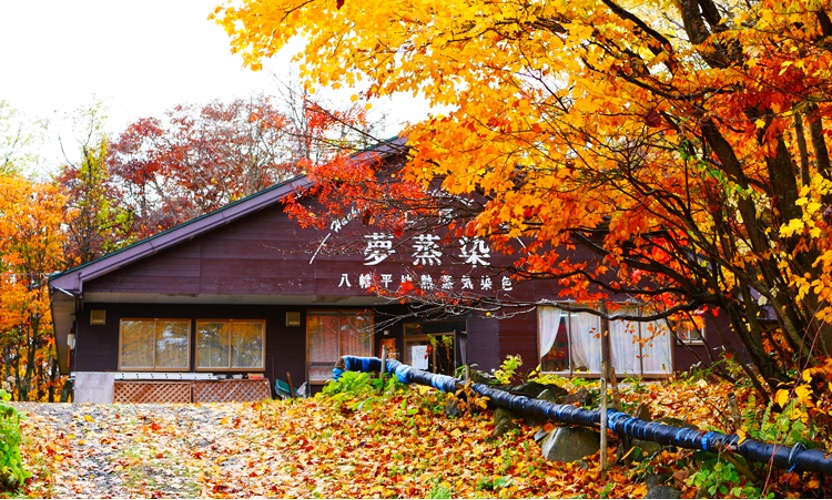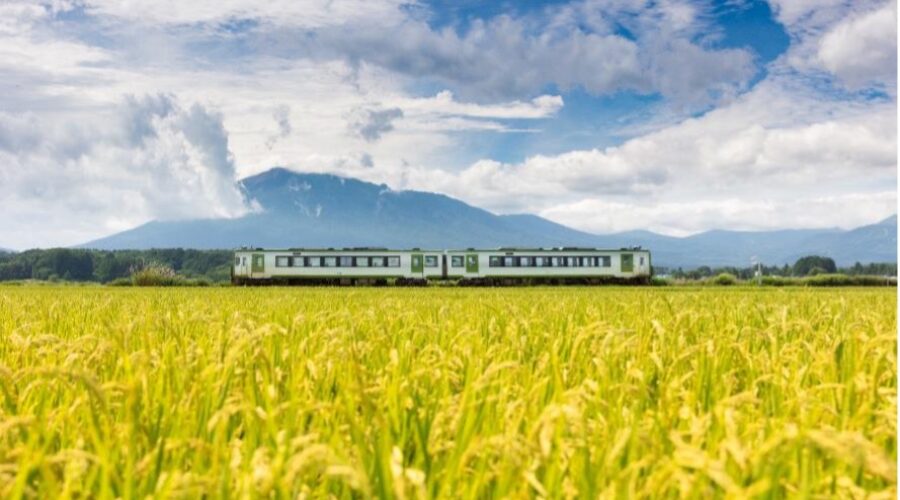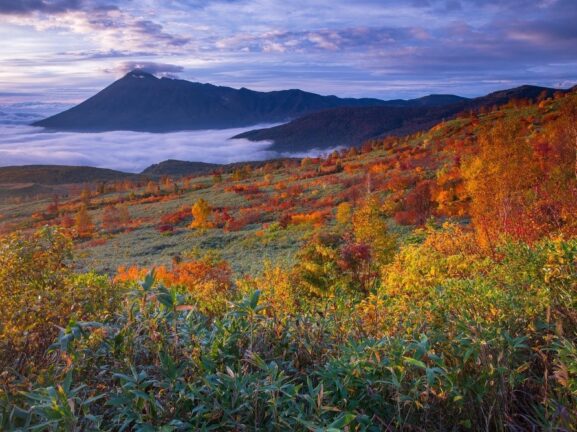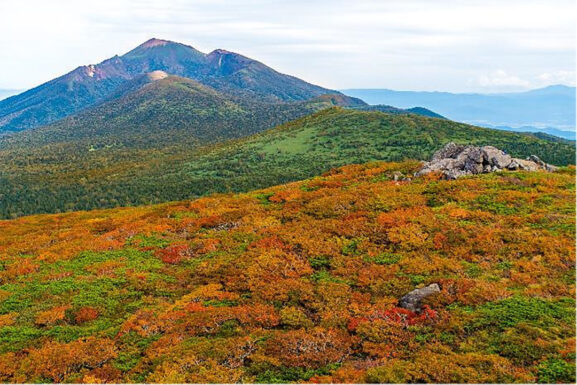Take an Autumn Train Ride Through Local Art History on the Hanawa Line
Some train lines really emanate nostalgia when you board them. JR’s Hanawa Line is one perfect example of such. It began operation in October of 1931 and has thus been operating for over 90 years, connecting Iwate and Akita across highlands and gorges. For nearly a century, passengers have been able to see incredible scenery unraveling around them from its windows.
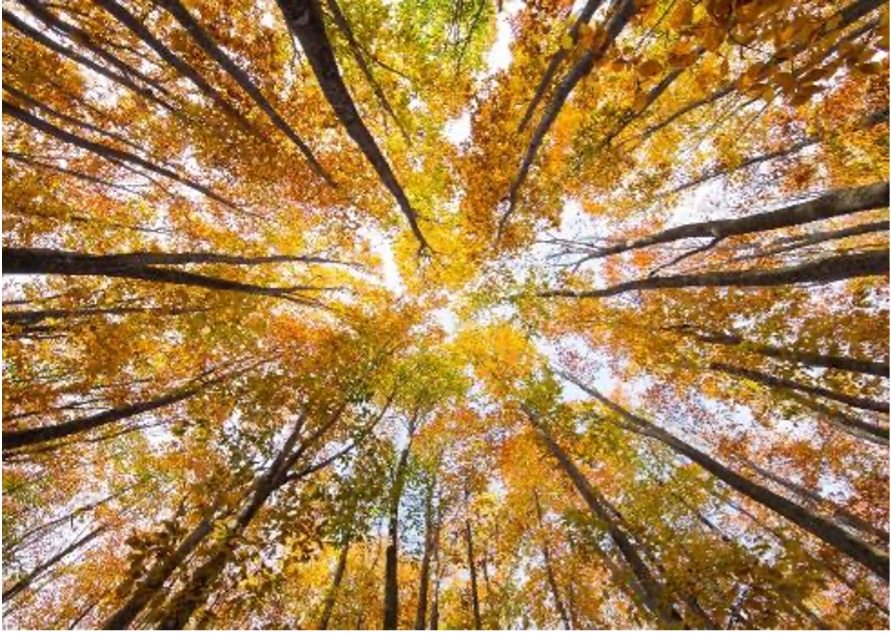
Many people know of Appi Kogen’s stellar powder snow, but the autumn views here, which were selected as one of the top 100 in Japan, are also not to be missed. Peak autumn occurs from late September to mid-October in Hachimantai. During such time, you could try a gondola ride from Appi Kogen up to Mt. Maemori (1304m altitude), and see the blanket of reds, yellows and oranges unfolding below you in the form of primeval beech forests.
You would have first-rate views of other mountains such as Mt. Hachimantai, Mt. Nanashigure, Mt. Himekami, and of course Mt. Iwate. Other times, you might get the chance to see a sea of clouds, like right out of a picture book. When the temperature is lower at night than it is the following morning, your chances of spotting such a landscape are high.
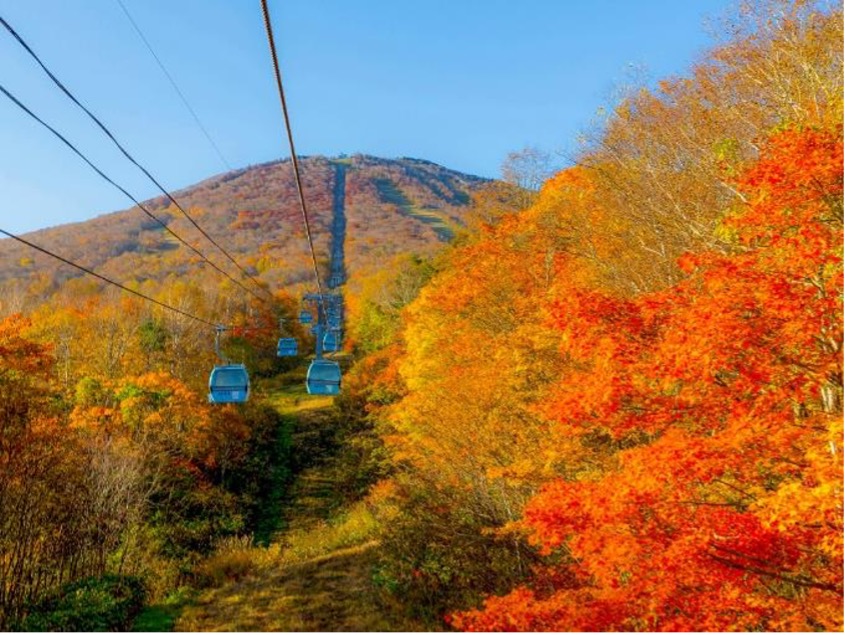
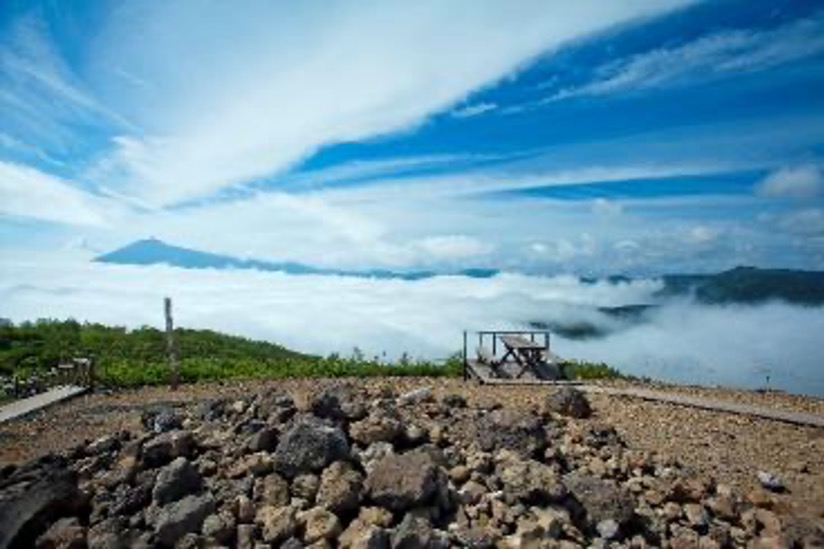
Appi Kogen’s Buna-no-Nijirin (Appi Secondary Beech Forest) was, around the time the Hanawa Line first began operation, a major logging site for charcoal and lacquer. It’s said that locals would use saws to fell one tree per hectare, leaving the largest trees alone. From such trees fell seeds that would grow into new saplings. That forest has grown into a magnificent area that gives us clean water and peace of mind, as well as a space to walk around and enjoy nature from up close. Today it is recognized as one of Japan’s hundred greatest forests.
※A nijirin, or “secondary forest” is one that originally grew in a given area, was weakened by deforestation or disaster, and has since naturally regenerated itself.
- Appi Gondola Rides Contact Information
- Appi Kogen Ski Resort:
- 0195-73-5111
- (Phone hours 9:00 – 17:00)
- Hotel Reservation Center:
- 0195-73-5010
- (Phone hours 9:00 – 18:00)
Experience Fine Art in Autumn through Geothermal Dyeing
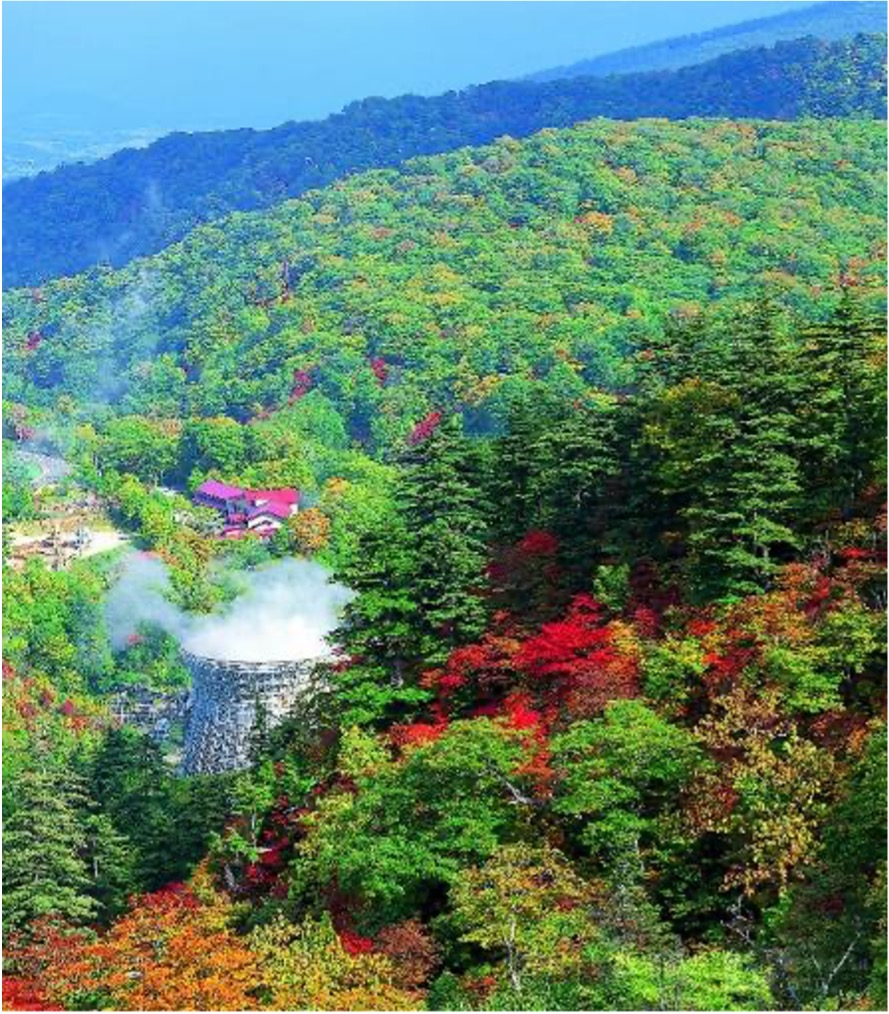
Hachimantai City has a major history of drawing on nature for its resources. It is home to Matsukawa Geothermal, the very first commercial geothermal power plant in Japan to enter operation, as well as Appi Geothermal, another plant that began construction in 2019. In the 1970s, hot springs utilizing the steam from this plant began piping water to a nearby hotel. Today, over 700 hotels, inns, cottages, hospitals, and other hospitality and welfare facilities get their water from this same source. As well, it was from Matsukawa’s steam vapors that geothermal dyeing techniques were born.
Believe it or not, geothermal dyeing began as an accident! It was discovered by the “geothermal dyeing research institute” and now remains as a dyeing method you won’t see anywhere else in the world. One of its defining characteristics is the incredible range of colors it can produce by utilizing the geothermal steam’s heat and composition. As the dye is seeped into the cloth using high-temperature vapors, tiny amounts of hydrogen sulfide in the vapors mix with the dye, causing it to lose color. These diametrically opposed operations of dyeing and decolorization are happening simultaneously, resulting in surreal patterns.
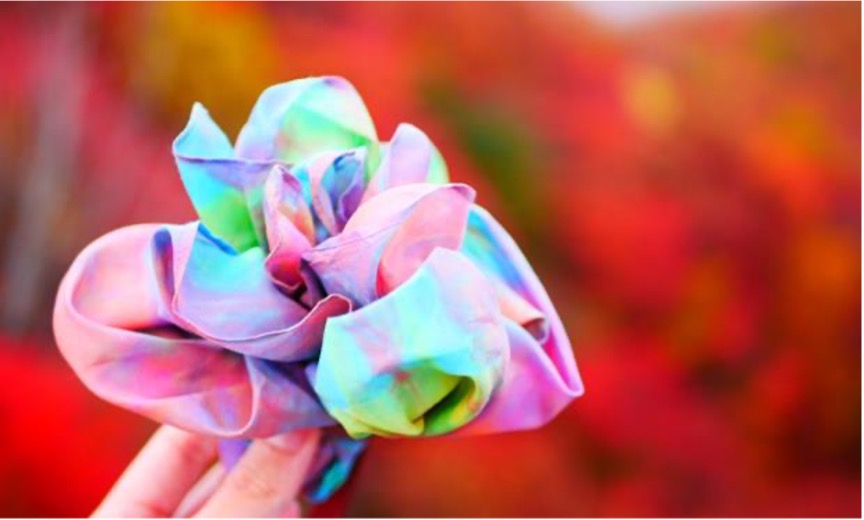
Geothermal dyeing involves the dye seeping deep into the cloth’s fibers, making the “shibori” part of process particularly important. Here, parts of the cloth are stitched off to guide the dye’s flow and create patterns.
Perhaps surprisingly, even the day-to-day conditions of the geothermal steam can have an effect on the final product. These factors as well as many others all influence the dye mix, meaning that ultimately no cloth will come out the same way twice, and no every pattern produced is eternally one-of-a-kind. That’s GEOCOLOR.
The Geothermal Dyeing Research Institute offers workshops where you can try the process out for yourself. The workshop is carried out by a dyeing artisan, who guides participants through Hachimantai’s history, geothermal steam, and the shibori sewing process. You may find yourself imagining a pattern as you work, yet after just 20 minutes in a steam-fed pot the pattern that comes out might just be inconceivable! Your very own original work can be taken home as a souvenir that same day.
Workshops can be held one-on-one or in groups of up to 15. They’re not available every day, so it’s important to check the schedule and confirm ahead of time. Groups in particular must reserve ahead. See below for contact information.
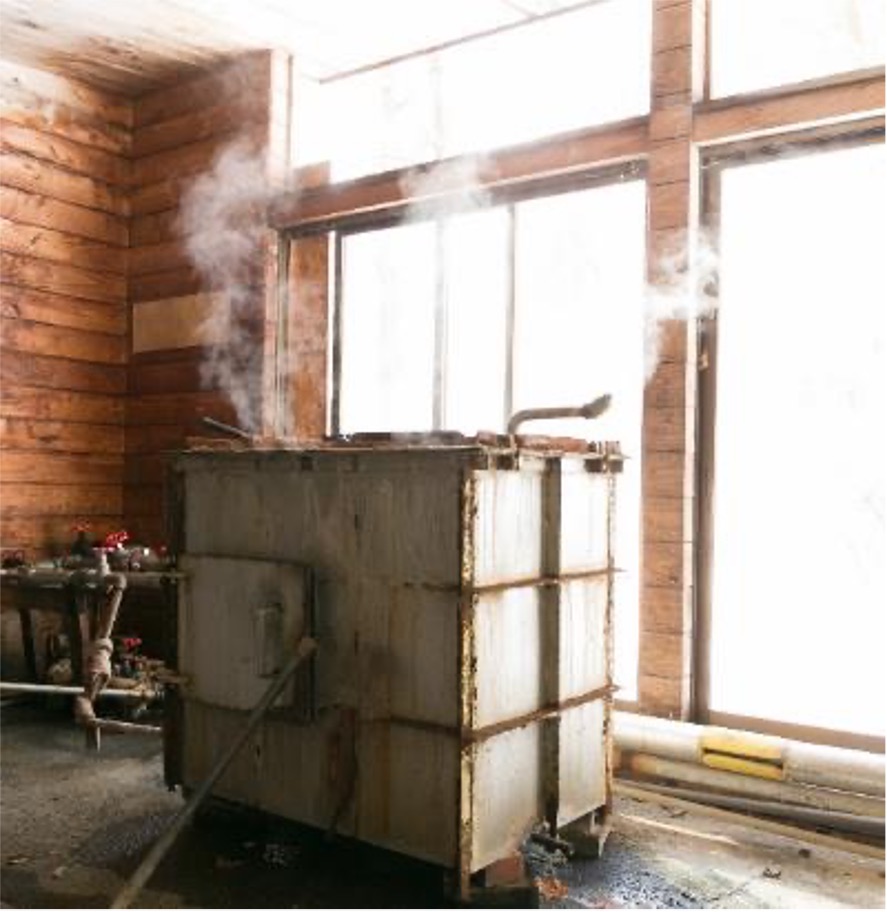
Right next door is Pension Alpen Rose, a café that also sells goods directly from GEOCOLOR. Not only is it filled with vibrantly colored handicrafts, but from its windows you can see the beautiful pond situated right next to it, Gyo-numa. The water’s surface reflects imagery of the surrounding foliage, making for an overall quite picturesque experience.
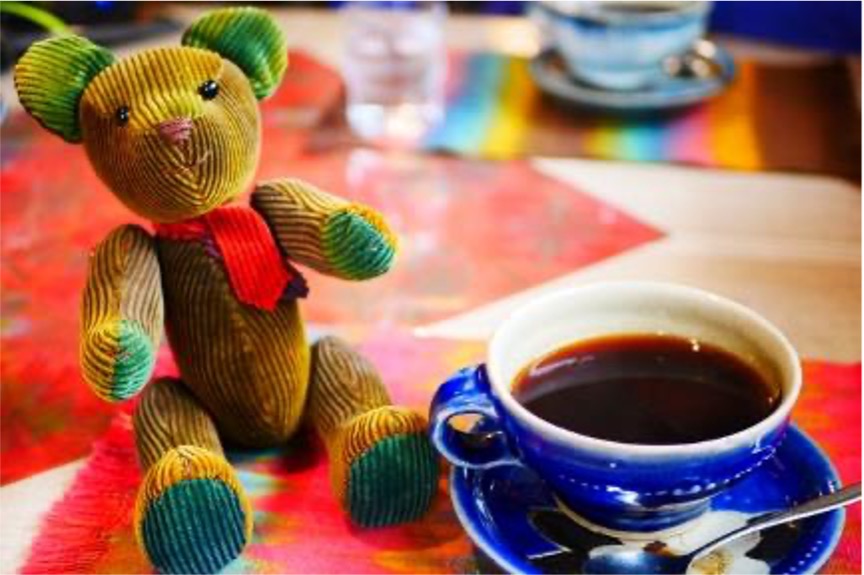
Geothermal Dyeing Research Institute & Workshop – Mujosen
- Rinpan 559 Wo-shohan, Matsukawa Kokuyurin, Matsuo-Yoriki, Hachimantai City, Iwate Prefecture
- 0195-78-2451
- Geothermal Dyeing Research Institute website
- Dyeing Workshop Schedule
- Closed Irregularly
Alpen Rose
- Rinpan 559 Wo-shohan, Matsukawa Kokuyurin, Matsuo-Yoriki, Hachimantai City, Iwate Prefecture
- 0195-78-3240
- Alpen Rose website
- Hours: 8:30 – 17:00
- Closed Irregularly
